Our Blog
When to choose steel inserts?
A lot of people wonder what type of a fireplace insert they should choose: a steel one or a cast-iron one? In no way is it an easy task, especially that before taking a decision, we should consider a number of other factors. To dispel any doubts, we are going to demonstrate when to choose steel inserts and when cast-iron ones.
A lot of people wonder what type of a fireplace insert they should choose: a steel one or a cast-iron one? In no way is it an easy task, especially that before taking a decision, we should consider a number of other factors. To dispel any doubts, we are going to demonstrate when to choose steel inserts and when cast-iron ones.
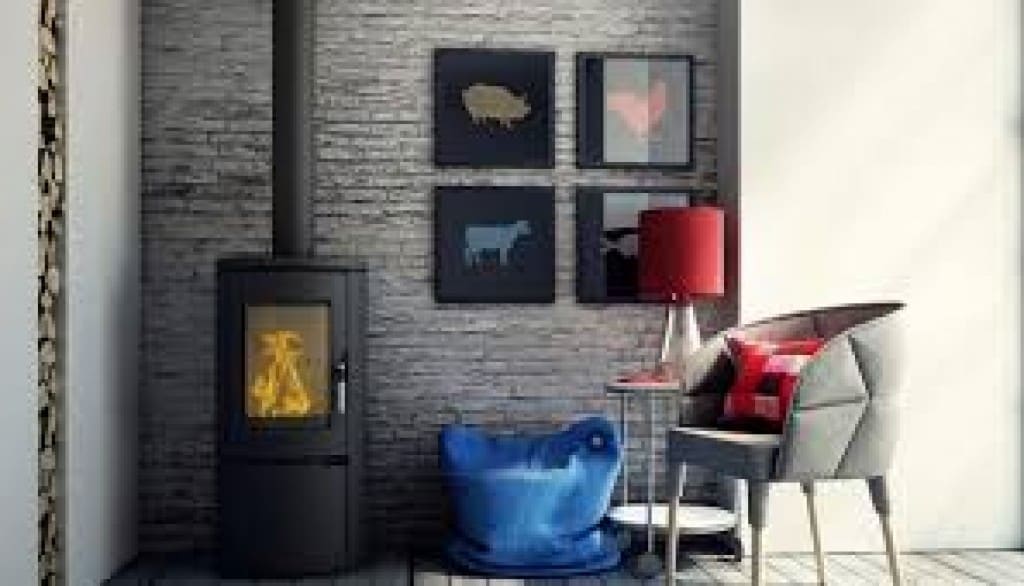
When is it worth choosing a bio-fireplace?
When designing their interiors, a lot of people dream of their own fireplace, which will give their space a cosy and warm feel. However, the installation of a traditional fireplace is not always possible. In that case, a bio-fireplace is a perfect solution. When is it worth choosing a fire-place and how to install it?
A bio-fireplace is an ecological fireplace, which does not require any installation of a flue and chimney system, of a ventilation system or an external air supply system. It is an interesting alternative for anybody, who wants to enjoy the flicker of fireplace flames.
A bio-fireplace - who for?
First of all, a fireplace is an ecological decorative element of any interior, which does not have such requirements as a standard room fireplace does, which means it can be installed anywhere we feel like it - including small spaces like the ones in blocks of flats. A bio-fireplace can either be an additional source of heat or the only one.
A bio-fireplace usually resembles a traditional room fireplace, however, a lot of producers offer either its miniature varieties or a free-standing designers versions. The latter ones are more convenient as they can be installed in places of our choice. We can hang them on the wall, build them into a niche or even mount them on the ceiling.
Bio-fireplaces, which is relevant, do not require any building permits or connection to a chimney installation. Thus, they can be installed in any place. Detailed installation instructions are found in producers’ manuals. A bio-fireplace is a perfect ground for architects, interior designers or ordinary users to show their talents.
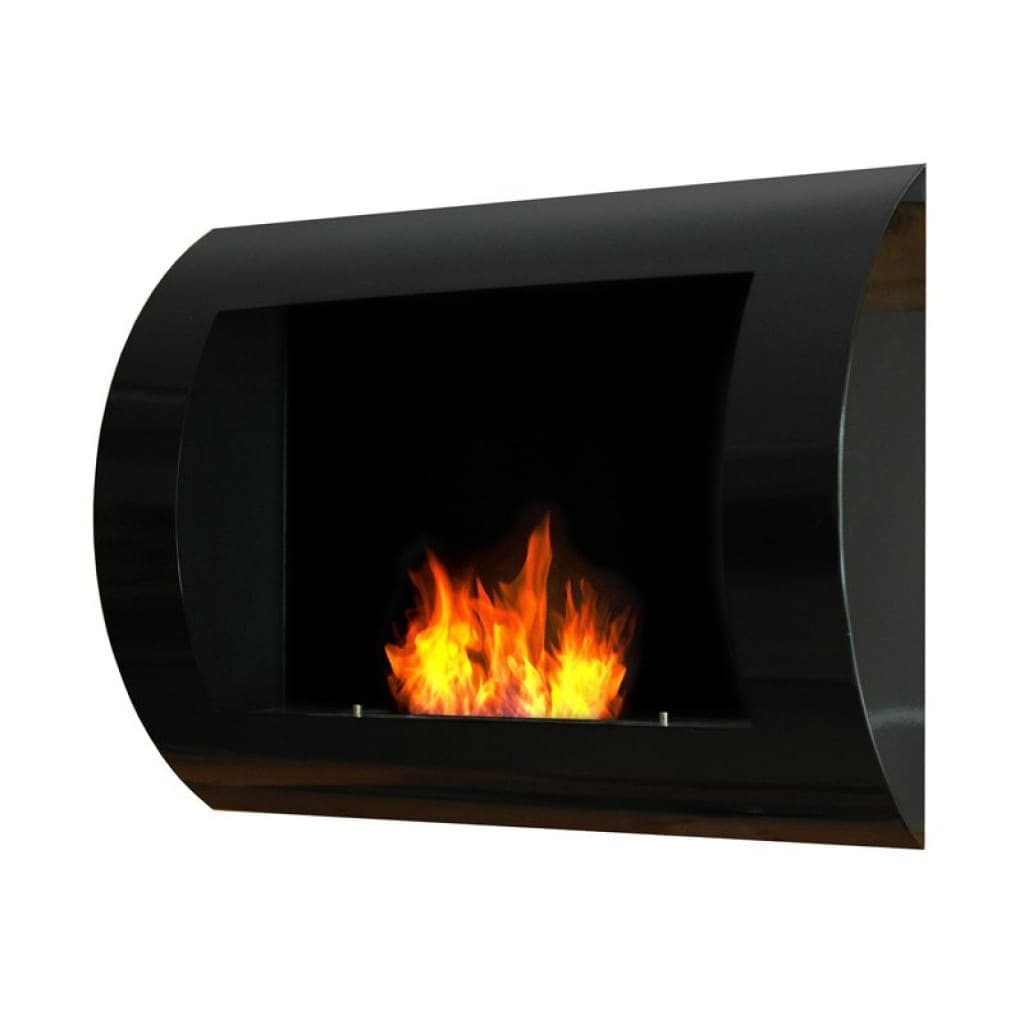
Conglomerate window sills - what interiors do they best harmonise with?
An inner window sill is a major finishing element of every interior. It is installed in the stage of plastering a room. Thus, it is worth taking a decision in advance, in the initial phase of finishing works. The purchase of window sills gets a raw deal, yet if you decide to buy conglomerate window sills, we can give you a few tips, what kind of interiors do they match best.
An interior window sill does not only protect walls against dust, which hovers over radiators, but it is also a principal decorative element. Window sills are produced from various kinds of materials starting from wood, through natural stone and ending with PCV. However, if you decide on conglomerate sills, it is worth considering if they will match your interior.
What kind of interiors does a conglomerate sill harmonise with?
While choosing a conglomerate sill, we should bear in mind that it should not dominate any interior. Ideally, a window sill should match such elements as a floor, a kitchen worktop or furniture. Since conglomerate is found in a variety of shades, conglomerate window sills match almost every interior. It is worth remembering that in the case of dark wooden window frames, it is better to choose a sill of the matching colour while with light frames we can go for sills of similar or even of contrasting colours. We should avoid stones of expressive patterns.
Window sill installation
An interior conglomerate window sill performs several important functions. Among other things, it allows the heat from a radiator to be evenly distributed and it protects a radiator from dirt settling. For this reason, its proper installation is very important. If we do it unskilfully, so called thermal bridging may occur, which leads to an additional heat loss. So an optimal depth for a sill installation should range between 1 to 1,5 centimetre, and the chink between the edge between the sill and the wall should be filled up with thermal non-conductive material.
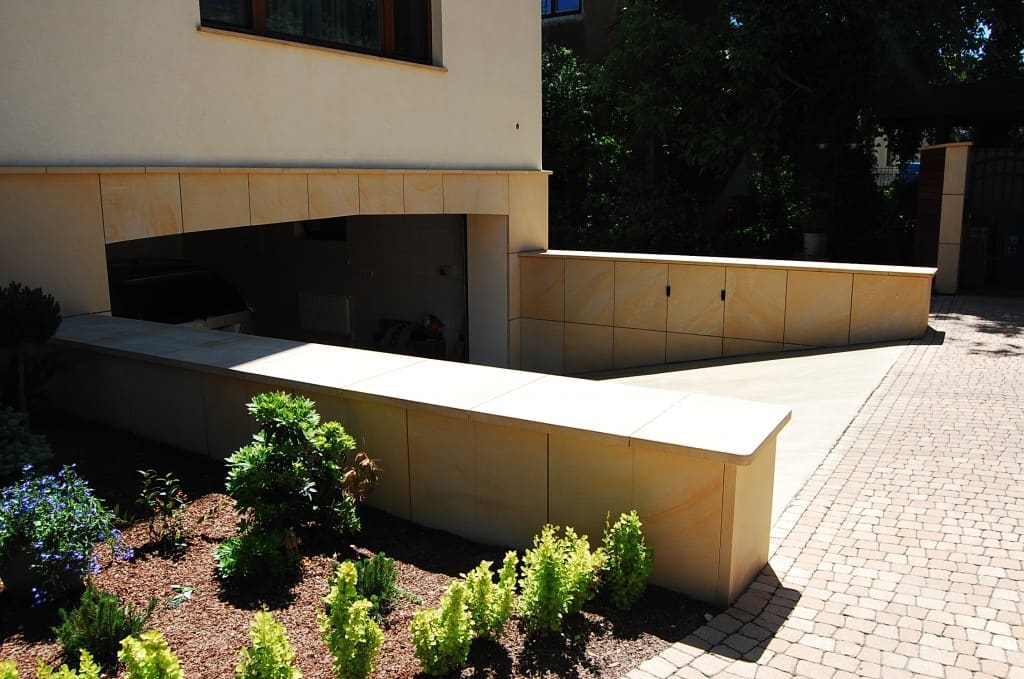
Agglomarble stairs - are they worth buying?
Agglomarble, in other words synthetic conglomerate is the material of high quality produced from carefully selected marble aggregate with the admixture of resin, which acts as its binder. Thanks to the application of modern technological processing, agglomarble can be used to produce stairs. Is it worth buying agglomarble stairs? Agglomarble is an exceptionally durable material of smooth surface, which can be easily kept clean. Additionally, owing to the use of resin, it is less brittle than marble or granite.
How is agglomarble produced?
Agglomarble is the stone made from carefully selected marble aggregates, which combined with resin form uniform rock of very smooth surface. Its composition is based on 90% of marble aggregates and 10% of epoxy resin. The absorption of agglomarble is three times as low as that of natural stone and its resistance to crushing and abrasion twice as high as that of natural stone. That’s why agglomerate seems to be an ideal material to produce stairs.
Is it a good idea to buy stairs made of agglomarble?
The answer to the above question seems obvious. Agglomarble is resistant to external atmospheric factors, damage and scratches - so we can certainly choose it to make our stairs. Are we going to regret this decision. Definitely not as agglomarble is one of the few materials which is unaffected by many external influences at the same time retaining its beauty.
Due to an array of colours it comes in and because of its processabilty, we will easily choose a material that will be suitable for your interior.
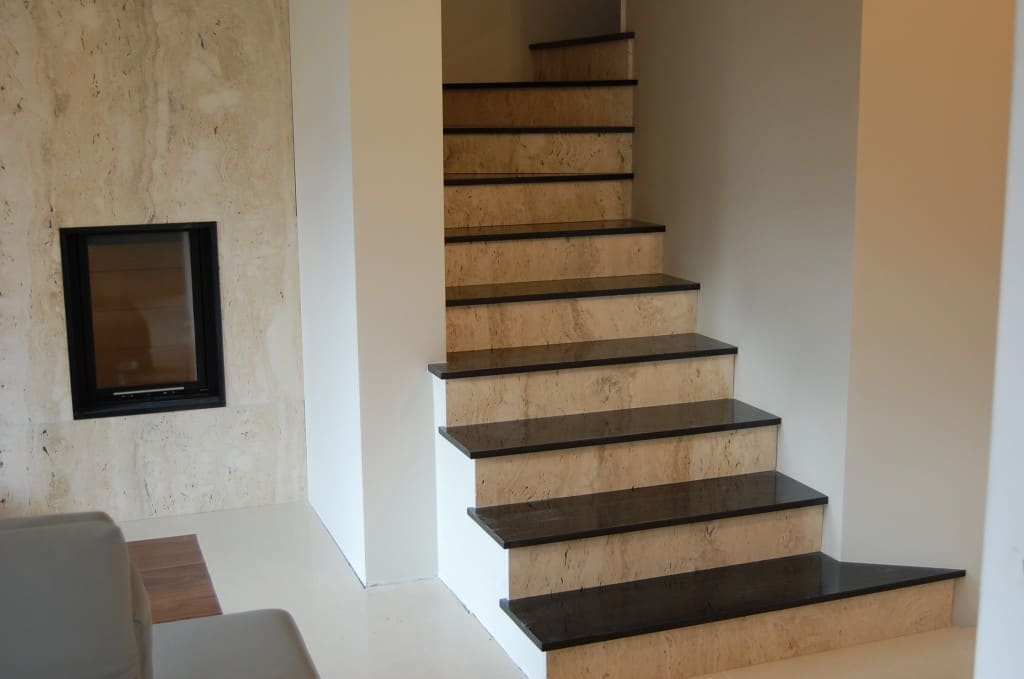
Agglomarble or conglomerate?
While decorating our apartment or our house, we face a dilemma, which stone to choose be it for a kitchen worktop or window sills or stairs. The quality of stone and its price, these are two decisive factors we take into account when taking a decision. Natural stone is now facing a growing competition of its synthetic counterparts such as agglomarble. How do these two differ and which one is better, let’s say for a window sill.∂
Agglomarble - what is this?
Agglomarble is nothing more than a synthetic conglomerate, which consists of 95% of crushed marble and 5% of polyester resin, which acts as a bonding. Many a person considers agglomarble to be better than its counterpart, as it is more resistant to numerous external factors. However, it is a synthetic product and its final shape is created by its producer. What’s more, it is characterised by an array of shades because during its production a limitless number of pigments can be added.
Which is better for a window sill: agglomarble or conglomerate?
Natural stone, which is the main ingredient of both agglomarble and conglomerate, for the most part determines their technical and durability parameters. Therefore, quartz conglomerate is the most durable material - resistant to damage, scratches, cuts and high temperature. The use of resin, which bonds the material, gives it some degree of elasticity, which enables manufacturers to produce conglomerates of large formats and of diversified thickness. It does not make much difference whether we will buy window sills made of agglomarble or of conglomerate. Both these products will perform their functions effectively. These are very flexible and elegant materials, which have got a lot of benefits like:
· interesting appearance
· durability
· resistance to external environmental factors
· temperature absorption
· UV resistance
· repeatability of patterns i shades
When buying window sills made of conglomerate or agglomarble, we have to face one problem only, namely which colour will best complement our interior.
This is a perfect and durable alternative to all natural stones used in the window sills production.

How to look after granite stairs?
Granite stairs - due to its quality and its array of colours it comes in, granite is the most frequently selected stone to produce stairs. In spite of its high resistance to abrasion, granite stairs should be regularly maintained so that they can retain their beauty as long as possible. How to look after granite stairs?
Granite is one of the most long-wearing stone and as such it has a wide range of applications. The functional properties of granite are its fundamental value. Granite stairs retain their beauty for many years and they are a stylish complement to every interior.
How to look after granite stairs?
Despite their high resistance to abrasion, even granite stairs need proper maintenance. First of all, we have to remember about their impregnation just after the installation. There are specialist granite care products available on the market and when using them we only have to follow the instructions on the packaging or in the attached leaflet. More intensive maintenance should be carried out every 2 to 3 years, which is not too gruelling or time consuming.
As regards everyday maintenance, we should follow a stonemason’s recommendations, although in most cases water with washing liquid will do. For granite stairs should be clean whatever the weather. We should regularly sweep them and clear them of snow - in the case of exterior stairs.
So, all we need to maintain our granite stairs are suitable accessories, cleaning and impregnating products. It is worth buying:
· Preparaty impregnujące.soft brush or delicate cloth
· granite cleaning products
· granite impregnating products
When to clean granite stairs?
Granite stairs should be cleaned regularly. On daily basis, we should remove water and organic rotting waste like leaves or grass etc. They include organic compounds, which may permanently discolour some areas. Besides, sand can also have negative effects on the stone as it acts like a sand paper and as such it can matt the smooth surface of granite.
It is not advisable to use a vacuum cleaner to keep granite stairs clean. Although, there are many different types of vacuum cleaner nozzles, we can scratch the surface with a vacuum cleaner only. To get rid of any kind of dirt or stain, it is enough to sweep the steps, and then clean them with a specialist granite care product. Despite the fact, that the stone is heat-resistant up to 3000 degrees Celsius, it can loose its lustre if we do not take a proper care of it in advance.
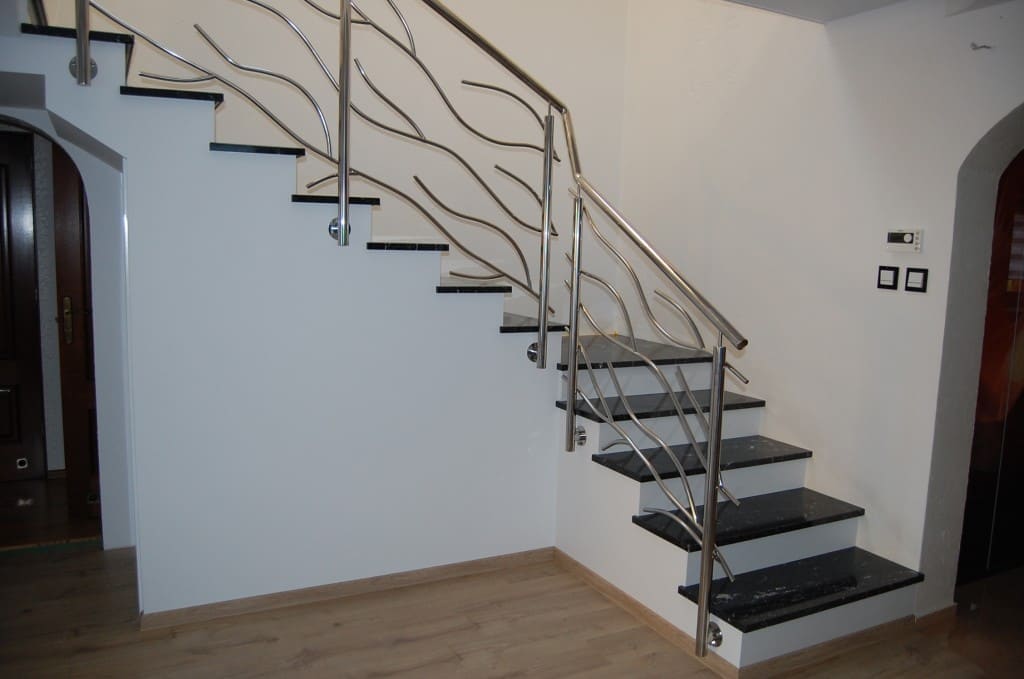
Marble or granite stairs?
Both granite and marble stairs look charming and they can add character to the whole interior.So, we are giving you a hint what to choose, marble or granite stairs? A lot of people wonder whether to choose stairs made of marble or of granite. As we can gather from numerous internet fora, many a customer is considering the purchase of these materials for their stairs. More and more often, they are giving up the idea of buying wooden stairs being afraid that although wood looks cosy and beautiful, it can get damaged very quickly
Granite stairs
Granite stairs are exceptionally durable and resistant to abrasion. They are also characterised by the ability to withstand adverse mechanical factors and they are frost resistant. A variety of textures granite occurs in affects its functionality. Additionally, its broad spectrum of colours makes it a versatile material suitable for every taste and every interior.
Granite stairs are most resistant to abrasion and scratching. They are easy to be polished and as such they are characterised by unmatched durability. They are entirely waterproof and good at accumulating warmth due to granite’s high density between 2,3 g/m to 2,8 g/cm.
Some people fear granite stairs are too slippery. In order to avoid this problem, it is worth considering buying the stairs made of sand granite, flamed or grained and then brushed.
Marble stairs
Schody z marmuru wybierane są ze względu na fakt, że są subiektywnie odbierane jako ciepMarble is the stone of lower durability than granite, which makes it easier to be treated. It is also characterised by low absorption ranging from 0,1% to 0,5%. Marble stairs can be easily polished to obtain a mirror finish.
Marble stairs are very popular among our Customers as these kind of stairs are perceived as warm and cosy. For this very reason and because of the properties of this stone, they are ideal for finishing elements of stairs as well as for stair treads, risers, bannisters and even landings.
Whatever choice you make, you have to remember about their proper impregnation. This kind of treatment can protect the surface against the permanent staining. Any dents can be easily repaired by means of an epoxide or a plaster putty knife.
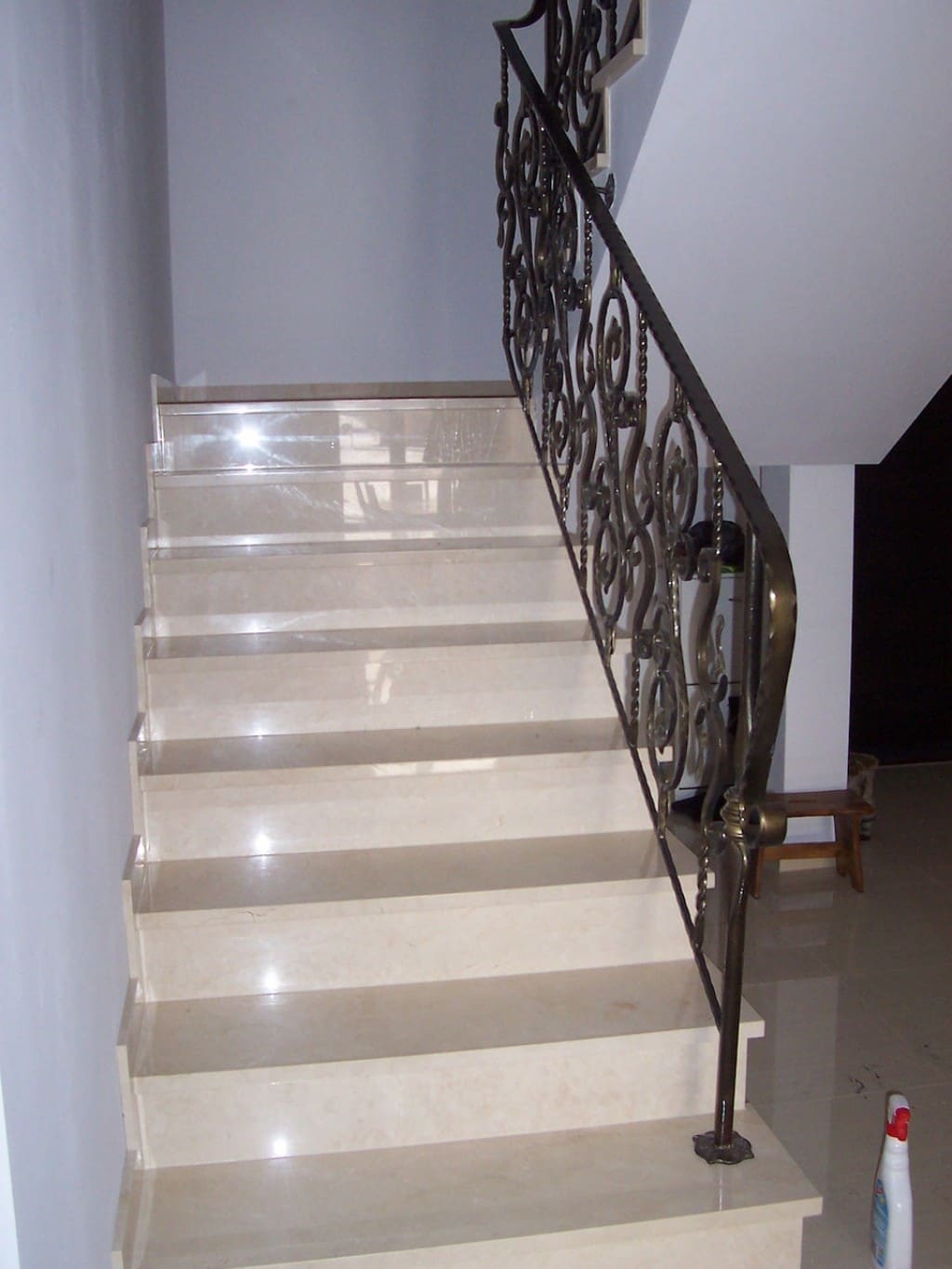
Is a bio-fireplace safe?
A modern bio-fireplace is an interesting alternative everywhere the installation of a traditional fireplace is not possible. This is particularly true of blocks of flats. This modern interior fireplace has got a lot of advantages, yet is it safe? Below you will find the answer to this question. Its greatest asset is its possibility to be installed anywhere a traditional fireplace with a water jacket insert or a cast-iron fireplace cannot be mounted. A bio-fireplace will not only heat our room but it will also complement our living space in a very original way.




